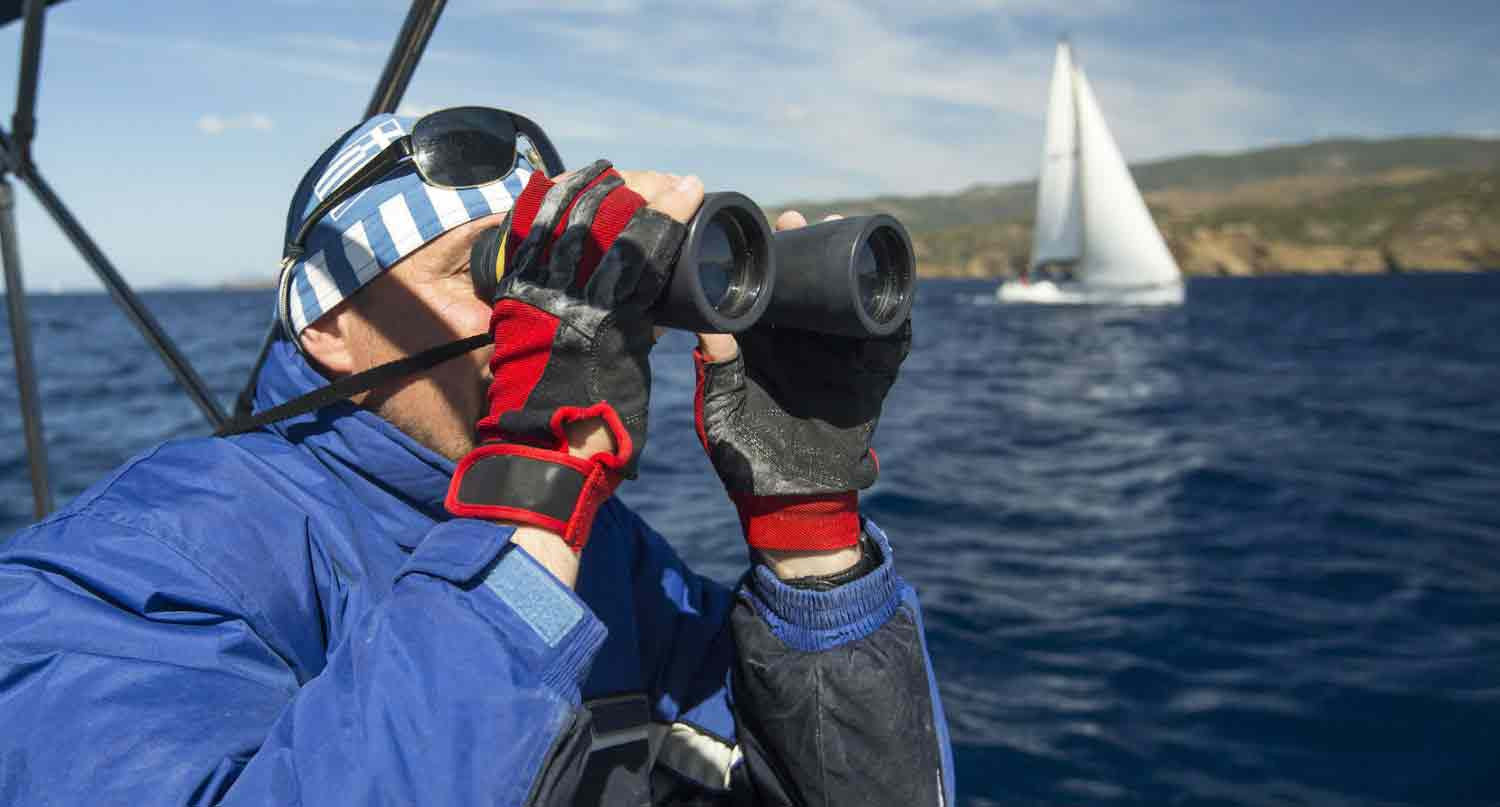Choosing binoculars for marine activities

Use our easy to follow guide to buying marine binoculars to help you choose the most suitable binoculars for use around water. Whether you’re out on the open waves in your yacht, kayaking down a meandering river, or on a guided boat tour to see all of the sea wildlife that you’ve ever dreamed of, you’ll reap heaps of benefits from owning a practical, quality and great performing set of binoculars. If this is the first time that you’re venturing into the marine binocular territory, then our short and easy to understand buying guide for marine binoculars will set you up with all of the information you need to choose the right binoculars for your marine activities. We’ve even given you some product suggestions to help you.
Low magnification
Choose binoculars with a 7x magnification for the best of both worlds
The higher the magnification of a set of binoculars, the more susceptible they are to be effected by shaky hands. Even slightly shaky hands can lead to the images produced by a set of high magnification binoculars being blurry and virtually impossible to make out. This is especially true when it comes to marine binoculars, as the motion of the vessel that you’re sailing on, added to the natural shake of your hands can lead to very blurry images unless you opt for binoculars on the lower end of the magnification scale. Keep the magnification low to get the most out of your binoculars when you're aboard a boat or kayak.
Large lenses
Binoculars with large 50mm lenses will be your best friend at sea
The larger the lenses of your binoculars, the more light they will let in, and the brighter the images they produce will be. If you’re heading out on the open waves at dawn, when light levels are low, having binoculars with large lenses is essential in ensuring that you don’t miss important landmarks that could lead to disaster if hit. 50mm lenses offer the perfect compromise between having lenses that are large enough to produce bright images, but not so bit that the binoculars become cumbersome and heavy. The combination of a 7x magnification and 50mm lenses will also give you a wide field of view so that you can see more of the ocean around you.
Porro prism design
Opt for porro prism design binoculars
Most binoculars targeted at marine activities have a traditional porro prism design, with wider spaced objective lenses than the more streamlined roof prism design. The porro prism design helps to give a wider field of view, and if possible we’d recommend choosing this style of binoculars for your water based activities.
Waterproof and fog proof
It goes without saying; if you’re using your binoculars near water they need to be waterproof and fog proof
Be sure to read the specifications of any binoculars that you’re considering for marine use carefully. Look for those that are fully waterproof and fog proof, and ensure that they have been nitrogen purged and O-ring sealed to prevent water from permeating the optics and ruining them. Some lower end binocular models may have a slightly water resistant rubber coating, but wouldn’t withstand the damp, sea salty air that they’re exposed to whilst boating. Some higher end marine binoculars have special water resistant, hydrophobic coatings on their lenses that make water bead and run off the optics quickly which is especially helpful if you're splashed by a wave. You may also want to keep a look out for binoculars that are designed to float if they’re dropped overboard, or those with a floating strap.
Quality lens coatings
If you can afford them, always choose binoculars with fully multicoated lenses
Special coatings are added to the optics in binoculars to reduce reflection, increase light transmission and improve image contrast. In general, the more coatings the lenses of a pair of binoculars have, the better the binoculars will be at achieving bright, high contrast and clear images.
Rubber armour
Help protect your binoculars - choose those with rubber armouring
Many binoculars have a rubber finish on them to make them more durable. This helps to protect the binoculars from bumps and scrapes if you accidentally drop them. The rubber armouring also helps to increase grip and reduce the risk of them going over board.
Built in compass
Some higher end marine binoculars include a built in compass that projects a magnetic bearing on to the image you see to give information about the direction of you are looking in. If you want to incorporate two pieces of equipment into one and would benefit from directional guidance whilst navigating your vessel then choose marine binoculars with a compass feature.
You may want to consider…
Stabilised binoculars use special stabilisation technology to allow them to produce a steady, clear image even at much higher magnifications. So if you’re wanting highly magnified images on board your boat, canoe or ferry, then you may want to take a look at our stabilised binocular options.








